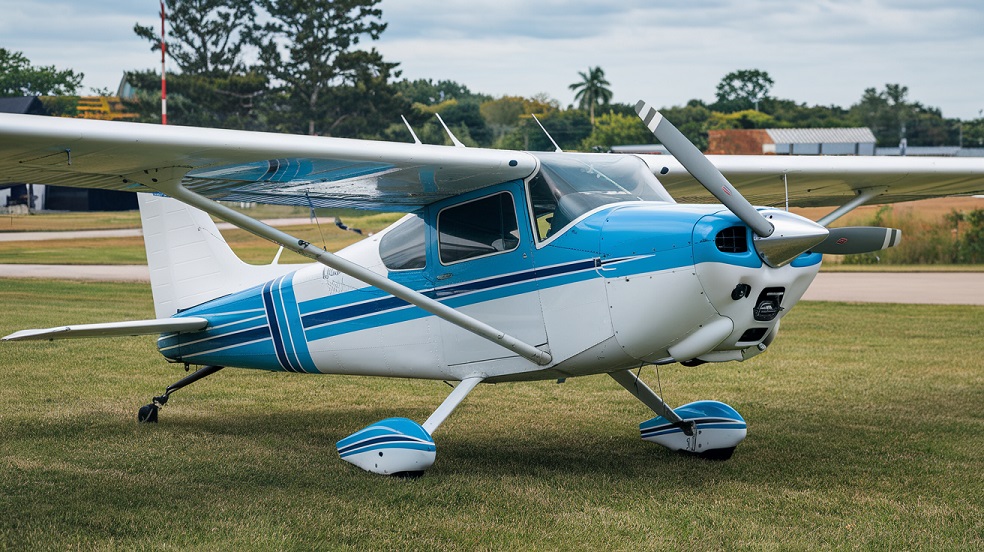The ultralight & light aircraft market is projected to grow from USD 10.17 billion in 2024 to USD 17.29 billion by 2029, at an impressive CAGR of 11.2%. These aircraft are revolutionizing the aviation industry by offering accessible, affordable, and functional air travel solutions, distinct from traditional general aviation. Designed for personal, recreational, and small-scale commercial uses, ultralight and light aircraft are increasingly attracting aviation enthusiasts and entrepreneurs due to their ease of operation, lower costs, and relaxed regulatory requirements in many regions. Their growing popularity stems from a broader shift towards private aviation, fueled by advancements in technology, materials, and propulsion systems.

Download PDF Brochure @
https://www.marketsandmarkets.com/pdfdownloadNew.asp?id=181448279
Materials play a critical role in defining the performance and efficiency of ultralight and light aircraft. Aluminum alloys dominate the segment due to their high strength-to-weight ratio, which is vital for achieving better range, fuel efficiency, and maneuverability. These alloys enable significant weight reductions without compromising structural integrity, making them the preferred choice for most manufacturers. Composites, with their superior corrosion resistance and flexibility in design, are gaining traction for next-generation aircraft. Other materials like steel and titanium alloys are employed for components requiring enhanced durability, although they remain less prevalent due to higher costs and weight.
Propulsion systems are another crucial factor in the market’s evolution. Conventional fuel-based propulsion currently leads the segment, supported by an established global infrastructure that provides easy access to fuel even in remote locations. Pilots operating ultralight and light aircraft, particularly in secluded areas, benefit from the convenience and reliability of traditional fuel options. However, the electric and hybrid propulsion segment is emerging as a growth area, driven by environmental concerns and technological advancements. While challenges such as inadequate charging infrastructure and limited battery capacity hinder immediate adoption, ongoing investments in sustainable aviation technology are expected to address these issues in the long term.
In terms of technology, manned aircraft continue to dominate the market, particularly for recreational flying and pilot training. These aircraft are favored for their simplicity, affordability, and ease of handling, making them ideal for new pilots and aviation enthusiasts. Regulatory requirements for manned ultralight and light aircraft are often less stringent, enabling a wider demographic to access flying as a hobby or career. Conversely, unmanned aircraft are gradually carving a niche in applications like surveillance and precision agriculture. Despite their potential, stricter regulatory frameworks and higher costs present significant barriers to broader adoption of unmanned systems.
Regionally, North America is the largest market for ultralight and light aircraft, driven by a strong culture of recreational flying in the United States and Canada. This region benefits from a well-developed aviation infrastructure, including numerous airports, airstrips, and flight schools, which facilitate both recreational and commercial flying activities. Fuel availability and support services tailored to light aviation further enhance the region’s attractiveness for private aircraft ownership and operation. Europe, meanwhile, is witnessing steady growth, supported by favorable policies promoting recreational aviation and sustainability. The Asia-Pacific region is the fastest-growing market, fueled by rising disposable incomes, expanding flight training programs, and increasing interest in aviation.
Key players in the ultralight and light aircraft market include Cirrus Aircraft, TECNAM SpA, Textron Inc., Piper Aircraft, Evektor Aerotechnik, and Honda Aircraft Company. These companies are investing heavily in R&D to develop innovative, lightweight, and fuel-efficient aircraft. Strategic initiatives such as partnerships with flight schools, entry into emerging markets, and advancements in electric propulsion are helping manufacturers capture new growth opportunities. Notable trends shaping the market include the shift towards electric propulsion, growing adoption of advanced avionics for improved navigation and safety, and an increasing focus on personal aircraft ownership.
Ask for Sample Report @
https://www.marketsandmarkets.com/requestsampleNew.asp?id=181448279
While the market holds significant promise, it faces challenges such as high initial investment costs, limited infrastructure for electric aircraft, and complex regulatory processes for unmanned systems. Addressing these barriers will require collaborative efforts between manufacturers, regulators, and infrastructure providers. Nonetheless, the ultralight and light aircraft market is poised for substantial growth as it continues to democratize aviation, offering accessible and sustainable flying solutions to a wider audience.